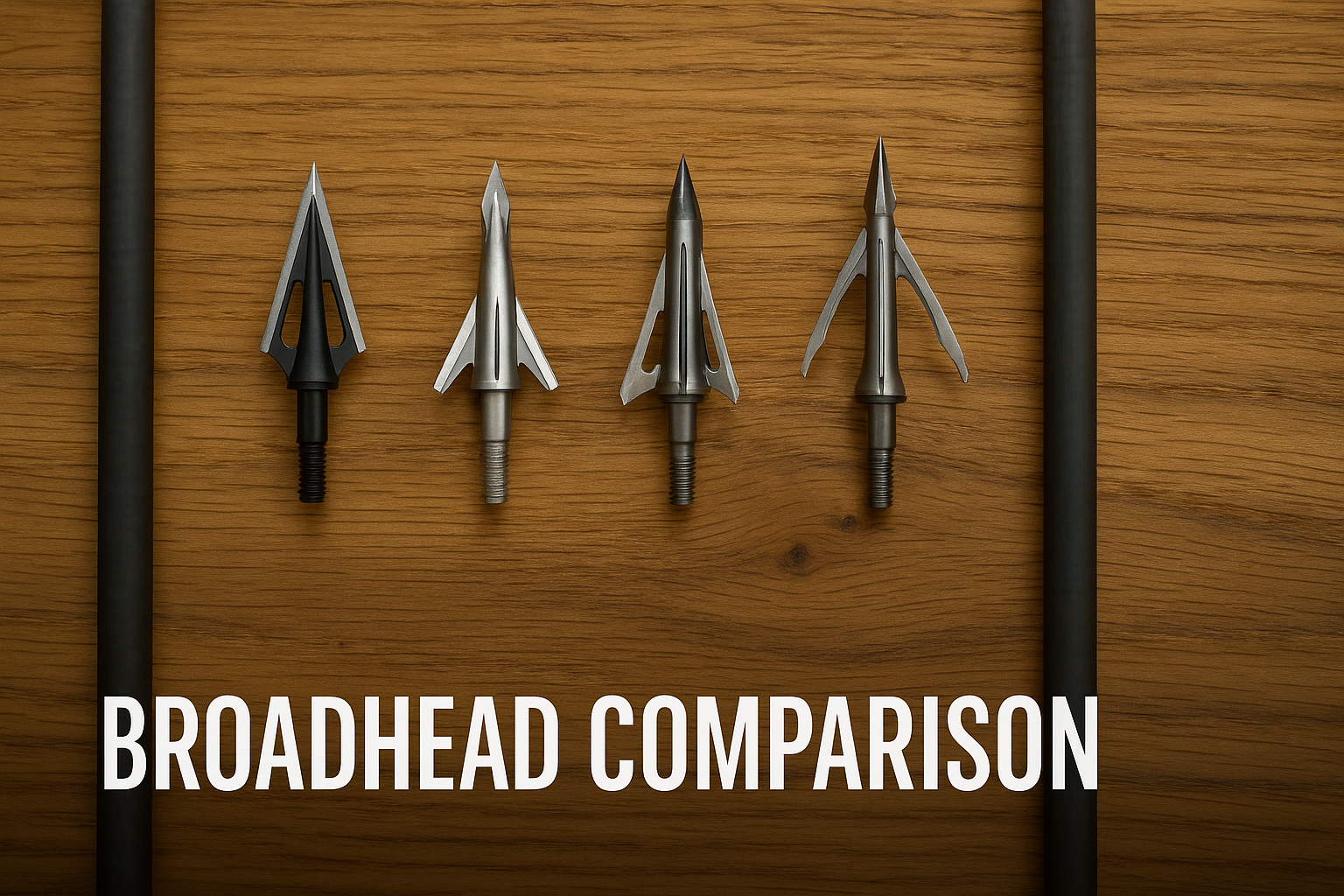
When it comes to bowhunting big game, your broadhead choice can make or break your hunt. While bows, arrows, and sights get plenty of attention, the broadhead is the ultimate point of contact—it’s the tool that penetrates hide, muscle, and bone to create lethal wound channels. Hunters have long debated the pros and cons of fixed-blade broadheads vs. mechanical broadheads, and for good reason. Both have loyal followings, unique advantages, and important trade-offs.
In this in-depth comparison, we’ll break down the strengths, weaknesses, and real-world applications of both styles so you can make the right choice for your big game hunts. Whether you’re pursuing elk, moose, whitetail, or even tougher targets like hogs and bears, understanding how each broadhead type performs will give you a decisive edge in the field.
Table of Contents
Before diving into the debate, let’s establish the basics. A broadhead is the cutting tip of an arrow, specifically designed for hunting. Unlike field points used in practice, broadheads are lethal tools engineered for penetration, tissue damage, and blood loss.
There are two main categories:
Each has subcategories—vented vs. non-vented fixed blades, rear-deploying vs. over-the-top mechanicals but the core debate centers on fixed durability vs. mechanical accuracy and cutting diameter.
Fixed-blade broadheads are the workhorses of bowhunting. With no moving parts, there’s almost nothing that can go wrong mechanically. This reliability makes them especially popular among hunters chasing big, tough animals like elk, moose, and bears, where bone penetration and guaranteed function are critical.
Because fixed blades don’t waste energy on mechanical deployment, nearly 100% of kinetic energy transfers into penetration. For hunters using traditional bows, lower-poundage compounds, or crossbows, fixed broadheads are often the safer bet for deep penetration.
One downside: fixed-blade broadheads often create smaller entry wounds compared to large mechanicals. While they kill effectively, blood trails may be less dramatic, sometimes complicating recovery if the shot placement isn’t perfect.
Here’s the catch—fixed blades are more sensitive to tuning. Because blades are exposed, they can act like “wings” in flight, exaggerating any tuning or form issues. Hunters often need to paper tune, broadhead tune, and practice extensively to ensure field points and fixed blades hit the same spot.
The biggest advantage of mechanical broadheads is their accuracy. With blades tucked in during flight, mechanicals behave much like field points. This makes them far easier to shoot accurately, especially at longer ranges.
Mechanical broadheads are known for large wound channels. Many models open to 2 inches or more, creating devastating entry and exit wounds. This leads to:
Because they expend some energy opening blades, mechanicals require higher draw weights and heavier arrows to achieve full penetration. On light setups, they may fail to exit or even stop short of vital organs if shot placement is poor.
The downside? Moving parts can fail. Blades may not deploy correctly if clogged by hide, bone, or heavy clothing. While modern designs have improved dramatically, this risk still worries many hunters.
| Feature | Fixed-Blade Broadheads | Mechanical Broadheads |
|---|---|---|
| Reliability | Extremely reliable; no moving parts | Risk of blade deployment failure |
| Penetration | Excellent, even on bone & thick hide | Good, but some energy lost on deployment |
| Accuracy | Requires tuning; wind-sensitive | Flies like field points; highly accurate |
| Cutting Diameter | Smaller (1–1.25 inches typically) | Large (1.5–2+ inches) |
| Blood Trails | Moderate; depends on shot placement | Heavy, due to larger wound channels |
| Best For | Big, tough animals (elk, moose, bear, hogs) | Medium game (whitetail, mule deer, antelope) |
| Draw Weight Suitability | Works with low to high poundage | Performs best with medium to high poundage |
| Risk Factors | Flight tuning required | Deployment failure possible |
It’s also worth noting that some states and provinces ban mechanical broadheads for big game hunting. Regulations vary widely, so hunters must check their local laws before heading afield. Fixed-blade heads remain universally legal, giving them a regulatory edge.
When it comes to the debate of fixed vs. mechanical broadheads for big game hunting, the real answer is not about which one is “better,” but which one is better for your setup and hunting scenario. Fixed-blade broadheads win in reliability, durability, and bone-crushing penetration, making them the go-to choice for hunters targeting elk, moose, hogs, or bears. On the other hand, mechanical broadheads deliver field-point accuracy and devastating wound channels, making them an excellent option for whitetails, mule deer, and other medium-sized game where blood trails and long-range precision matter most.
At the end of the day, your draw weight, arrow speed, target species, and hunting environment should guide your choice. Many experienced hunters keep both styles in their kit, switching depending on the animal they’re pursuing. What matters most is ensuring your broadhead is sharp, your bow is tuned, and your shot placement is ethical.
By understanding the strengths and weaknesses of both types, you’ll be equipped to make the best decision for your next hunt—maximizing accuracy, penetration, and most importantly, achieving quick, ethical kills in the field.
Upland bird hunting especially for pheasant and quail is one of the most rewarding pursuits…
A hunting rifle is more than just a tool it’s a trusted companion in the…
Choosing the best tree stands under $300 is one of the smartest investments a hunter…
When dark clouds roll in and rain starts falling, many hunters pack up their gear…
Competitive shooting requires skill, precision, and the right equipment. Whether you're a seasoned competitor or…
The world of archery is undergoing an exciting evolution. What once were purely mechanical tools…
This website uses cookies.